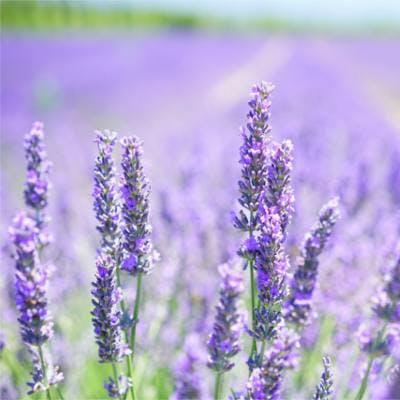
Botanicals Guide: Lavender & a zesty biscotti
Soothing, floral, fragrant... lavender is a scent we all know very well, but did you know it's even lovelier in a bottle of gin? In a spiced gin like November's Gin of the Month, Four Pillars, the flavours of this beautiful plant simply come alive!
Lavender is one of the more unconventional botanicals used in gin. Neither particularly common nor extremely rare, it gives gins exactly what you would expect – a fragrant floral aroma.
This shrubby plant – which belongs to the mint family – is most commonly found in the mountainous regions of the western Mediterranean, but also grows extensively in parts of France, England and even as far north as Norway.
There are various species of the lavender plant, known as Lavandula vera, with two of the most common including French Lavender and English Lavender. Provençal France is famous for the blooming lavender fields that turn the countryside a beautiful purple hue every summer, while English Lavender is the most commonly cultivated species of the plant – and the one that lends the colour ‘lavender’ its name.
Lavender was used by Egyptians for embalming, by Romans for bathing and by doctors during the Great Plague of 1665 to protect against the disease. Queen Elizabeth I loved the fragrant botanical and, supposedly, insisted that a jar of lavender preserve be served on the table for every meal. Queen Victoria was such a lavender enthusiast that she appointed a "Purveyor of Lavender Essence to the Queen" and used the flower for everything from washing the palace floors to pressing the royal linens.
Today, lavender is most popular for its essential oil, found in the flowers and flower-stalks of the plant. The versatile herb can heal you inside and out. Often nicknamed ‘first aid in a bottle,’ it does wonders for burns, insect bites and all sort of blemishes.
During World War I, lavender oil was used to dress war wounds when medical antiseptics were in scarce supply. Most recently, lavender has resurged in popularity with the increasing practice of aromatherapy, and is often used to reduce anxiety and stress, to relieve headaches and to aid sleep naturally.
In gin, the rich aroma of lavender brings floral and savoury notes to the spirit, which complement the ever-present juniper and can also play well off of many spiced botanicals, such as cubeb pepper. Lavender gives rich textures and flavours a lift, and for this reason it pairs exceptionally well with honey or citrus (or both), in both cocktails and cuisine. Why not try this trinity of flavours in some lovely biscotti?
Lemon & Lavender Biscotti
(Makes one biscotti log)
340g honey
80g butter
2 tablespoons edible lavender
2 lemons, zested
1 tablespoon vanilla extract
4 egg whites
450g plain flour
10g baking powder
½ teaspoon salt
100g whole almonds, coarsely chopped
Method:
1. Preheat oven to 175C. Line baking sheet with parchment paper.
2. In food processor, combine honey, butter, lavender, lemon zest and vanilla. Gradually add in egg whites until combined.
3. In mixing bowl, sift flour, baking powder and salt. Add honey mixture to bowl along with almonds and combine.
4. Form mixture into a log about 4 inches wide and 1 inch high and bake on a baking sheet for 25-30 minutes until golden. Remove from oven and allow to cool for 15 minutes.
5. Lower oven temperature to 150C.
6. Slice baked log with serrated knife into 1cm thick slices and lay on baking sheet. Bake for additional 15 minutes and serve.







